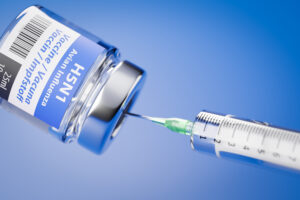Analysis of FDA Top Observations Provides Additional Perspective. Is Your FSVP Compliant – If Not Watch Out!
During the COVID-19 pandemic, it is evident that FDA has done its best to maintain an appropriate inspection and oversight strategy. While routine inspections did stop for a while, the Agency was still very responsive to immediate threats to public health. We often get asked, “What is FDA focusing on during inspections?” While the usual answer is driven by what led to the inspection, it is useful to get a glance at where FDA saw the greatest number of problems during inspections. This information is important because it means, at least in the short term, FDA will continue to focus on these areas because they are posing a problem to the industry.
So what did FDA find? A quick glance at FDA’s recently published list of Food Facility Inspection Observations for FY2020 shows the top five FDA 483 food facility citations in 2020 to be FSVP Development; Hazard Analysis; Pest Control; Manufacturing, Processing, Packing, Holding Controls; and Personnel. But when TAG delved deeper into the list, assessing the reasons for the citations, rather than the specific “short description” jotted into the form, a different story emerged.
The assessment began when we discovered that in addition to the 514 citations for lack of “FSVP development” listed as the first item on the Excel document, there were another 40 citations listed as “FSVP development” on another line. The difference was that one was cited under 21 CFR 1.502(a), the other under 21 CFR 1.512(b)(2). So we took a look at the rest of the document to find other duplicates and determine the general areas of noncompliance in an attempt to sort out the main messages.
By doing so, we found that two of the top five remained in the top, while three other areas of concern can be seen as having been more frequently called out during inspections:
- FSVP Development. The top reason for a 483 observation on the FDA list was that the facility had not developed a Foreign Supplier Verification Program (FSVP). With more than 500 facilities being cited for that reason, it seemed to be far and away the top reason. Interestingly, though, looking further into the list, it was found that the exact same observation “You did not develop an FSVP” was listed twice, under two separate provisions increasing the number from 514 to 554. Additionally, there were citations for not maintaining or following the FSVP or providing assurances that the foreign supplier follows processes and procedures that provide the required level of public health protection.
- Sanitation. More than 550 observations were related to sanitation, with the top noncompliances listed as related to Sanitation Monitoring (81), Sanitary Operations – Plant Maintenance (80), Plant Sanitation (58), and Sanitary Facilities and Control (58), Even with the last a bit off the mark of sanitation, all of these – and the numerous other citations lead to sanitation issues that can impact food safety – and a “tick” mark on a 483.
- Hazard Analysis. Just over 200 observations were made of noncompliance with hazard analysis provisions, with lack of “identification of hazard” or of a written hazard analysis responsible for more than 75% of these; specifically “Your hazard analysis did not identify a known or reasonably foreseeable hazard that required a preventive control.” “You did not have a written hazard analysis to identify and evaluate known or reasonably foreseeable hazards [to determine whether there are any hazards requiring a control].”
- Hygienic Design. Interestingly, the third highest noncompliance in our analysis was for lack of hygienic design of either the plant itself or equipment and utensils. This was related to both the plant design to facilitate maintenance and sanitary operations as well as equipment and utensils not designed and constructed to be adequately cleaned or maintained to protect against allergen cross-contact and/or contamination.
- Supply Chain Controls. Less surprisingly was the number five spot being related to a variety of supply chain controls. By far, the greatest related observation was that of lack of documentation of a foreign supplier being approved “based on an evaluation that you conducted of the foreign supplier's performance and the risk posed by a food or based on a review and assessment of another entity's evaluation of a foreign supplier's performance and the risk posed by a food” … which takes us right back to #1 – verifying foreign suppliers.
Although FDA temporarily discontinued enforcement of the requirement for an onsite audit of suppliers in areas with COVID-19 travel restrictions or advisories, the agency did not completely release importers from the provisions of the FSVP rule. Rather it required the receiving facility or FSVP importer to temporarily select an alternative verification activity or activities and modifying its food safety plan or FSVP to incorporate the alternative activity or activities, and continued to enforce the rule through remote inspections, making written requests for importers to provide records to the agency electronically or by other prompt means.
In the midst of domestic COVID controls and vaccination challenges, some facilities may have found it difficult to focus on their foreign supply chains and let that process slip a bit. But it is in the midst of challenges that such verification is the most critical, as suppliers – in all parts of the world – are facing such challenges as well and could be allowing food safety practices – or their own sanitation, hazard analysis, hygienic design, or supplier controls – to slip.
The main message I want to convey is that FDA is focused on important compliance areas. The five top areas identified by FDA can all be managed in an effective way that will not only result in regulatory compliance but also reduce your overall food safety risk. Even if you think your programs are good, they may not be. So whether you are having challenges with COVID controls, vaccination challenges, FSVP verification or any of the areas of the 4,594 observations made by FDA in 2020 – or just want to check that your systems are good – give TAG a call. We can help!





